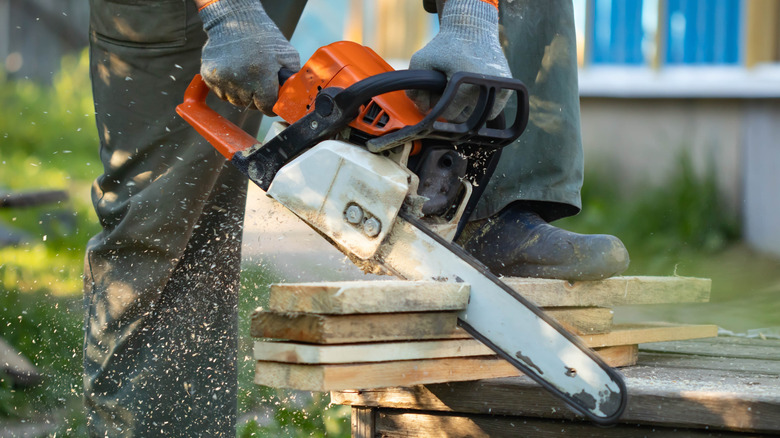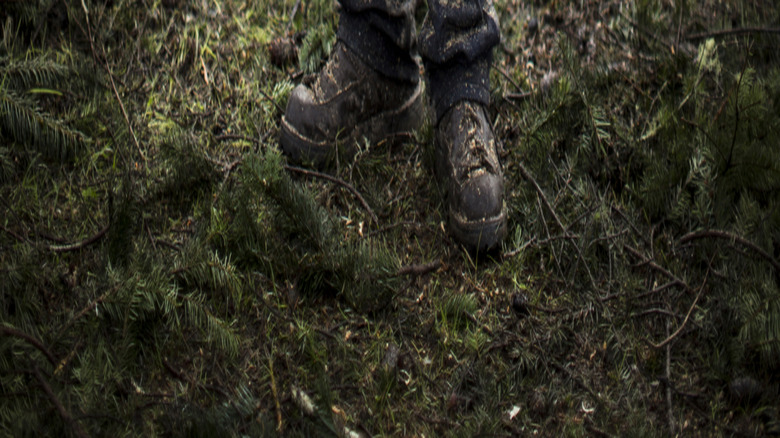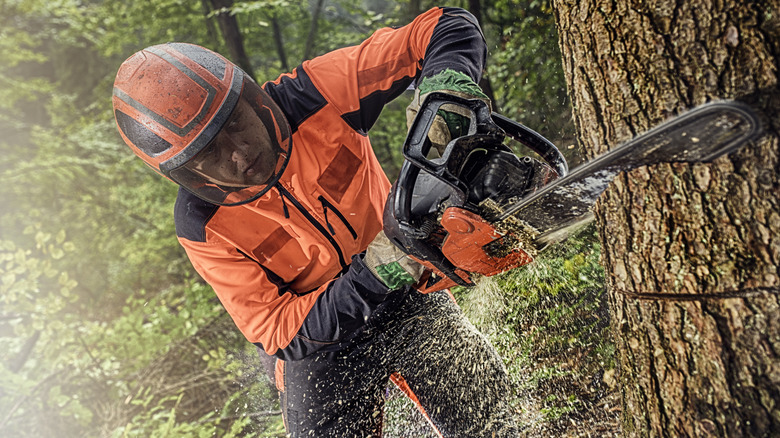Dangerous Mistakes You Should Never Make When Using A Chainsaw
We may receive a commission on purchases made from links.
Chainsaws are among the most powerful household tools — but, like somebody's uncle probably said once, with great power comes great responsibility. While they can greatly reduce the time and effort required for cutting lumber, they can also be extremely dangerous if misused. Before taking on any project involving a chainsaw, it's essential to know the most common mistakes made when using them — mistakes that can throw a wrench into your project, send you to the hospital, or worse. The most common of these mistakes are holding the chainsaw wrong, cutting materials the tool isn't intended for, and not wearing the proper safety gear.
Holding a chainsaw the wrong way is a serious safety hazard. A poor grip can lead to instability and make you more susceptible to accidents like kickbacks, which are among the most dangerous consequences of incorrect handling. Kickbacks occur when the chainsaw tip hits an object and forces the saw back to you. To ensure you are safely using a chainsaw, position yourself correctly and make sure your hands are gripping the saw as intended. Stand with your feet shoulder-width apart and slightly bend your knees for added stability. Always hold the saw with both hands — your non-dominant hand on the front handle and your dominant hand on the rear handle. This will give you maximum control and prevent the chainsaw from slipping during use.
Never try to cut materials other than wood with a chainsaw
Choosing the right chainsaw is important because using the wrong size tool for the job can cause difficulty or injury. No matter what type of chainsaw you're using, though, you should never attempt to cut a material other than wood. Chainsaws are designed for cutting wood only, and trying to use them on other materials is a one-way ticket to disaster. Using a chainsaw on metal, concrete, or wire might seem like a good idea at the time, especially if you're in a hurry, but this can end badly. Not only can you damage the chainsaw, but you're also putting yourself at risk in multiple ways. Taking a chainsaw to the wrong materials can cause dangerous showers of sparks (which could potentially present a fire hazard), cause the tool to slip, or even snap the chain.
Even when dealing with wood, there are things to avoid. Wet wood can be unpredictable and cause the chainsaw to bite or kick back. Also, if there are nails, screws, or other metal objects embedded in the wood, you're playing with fire. Always inspect the material before you start cutting. If you see anything potentially hazardous, stop and reassess.
Always wear proper safety gear when using a chainsaw
It might be tempting to skip the safety gear for a "quick" job, but that's a good way to end up in the emergency room. Chainsaws are very powerful and can be unpredictable, and without proper protection, even the slightest slip-up can cause serious injury. To make sure you complete the job safely, you should always wear a helmet, goggles, gloves, chainsaw chaps, and eye protection, at the least.
Leg protection such as YARDMARIS Technical Wrap Chainsaw Chaps is probably the most crucial safety item. These chaps are made with special layered fibers that can stop the chain if it accidentally comes into contact with your legs. Wear high-quality gloves to maintain a good grip; wet or slippery hands can cause you to lose control of the chainsaw, so these are an absolute must. Use goggles to shield your eyes from flying debris, and you may want to protect your ears with earplugs or earmuffs. Finally, if felling a tree or cutting branches down, it's a good idea to wear steel-toed boots to safeguard your feet from falling branches or slips of the chainsaw blade and follow these tips for how to correctly fell a tree using a chainsaw.


